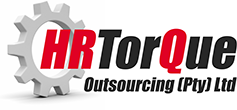In a situation where employers have been forced to implement changes to their salary structures to manage their cash flow it is important that they consider whether they are still going to contribute to risk benefits and make medical aid contributions (employer or employee).
Consider these scenarios:
- John Smith Ltd has applied for TERS scheme benefits as they cannot afford to pay employees. When they receive the benefits from UIF they pay them directly to employees. Usually the company contributes 5% of remuneration to a provident fund which includes a contribution for disability and death. In addition, they usually contribute to the employee’s medical aid scheme as a deduction from the employee’s salary. During April they don’t make either the risk contributions or the medical aid contribution. One of their employees gets ill which leads to serious complications. Their medical aid refuses to cover them because their premium wasn’t paid and their insurance company won’t pay out their disability claim for the same reason. They sue John Smith Ltd.
- Adventurous Ltd don’t have medical aid, but they do have a provident fund and are planning to top up pay to employees by a little bit in addition to TERS funding. To save money they do pay risk benefits but don’t contribute to the provident fund. They don’t communicate with employees nor the provident fund. The employee claims for disability and finds out their risk salary has been reduced because their salary was substantially meaning the insurer is only prepared to pay out a much lower amount. They sue Adventurous Ltd.
Please think through the consequences of decisions made in haste. Employers need to consider their contractual obligations to employees and their contractual obligations with third parties. Communication with all parties is also critical.

